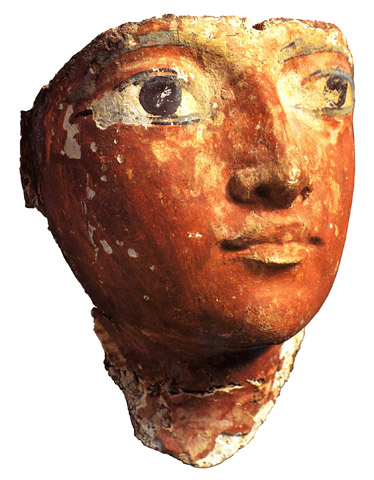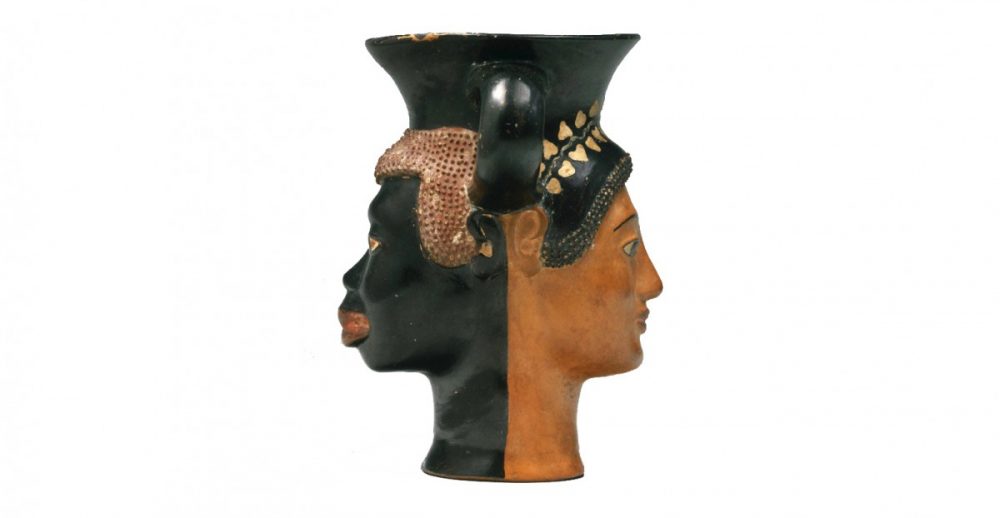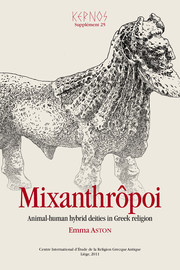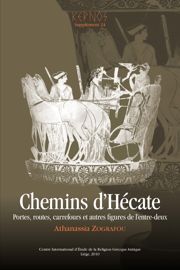Tuesday, October 31, 2017
Newly added to Orbis Biblicus et Orientalis Online
Newly added to Orbis Biblicus et Orientalis Online
- Eschweiler, Peter (1994). Bildzauber im alten Ägypten: Die Verwendung von Bildern und Gegenständen in magischen Handlungen nach den Texten des Mittleren und Neuen Reiches. Freiburg, Switzerland / Göttingen, Germany: Universitätsverlag / Vandenhoeck & Ruprecht.
- Lichtheim, Miriam (1988). Ancient Egyptian Autobiographies Chiefly of the Middle Kingdom: A Study and an Anthology. Freiburg, Switzerland / Göttingen, Germany: Universitätsverlag / Vandenhoeck & Ruprecht.
Numishare News: ANS web projects, IIIF deployed on new server
ANS web projects, IIIF deployed on new server
In other big news today with the consolidation of Nomisma and ANS digital projects on numismatics.org onto the same dedicated server (which is much more powerful than the separate cloud servers each domain previously ran on), our IIIF image server (Loris) and presentation APIs are now running in production. IIIF functionality extends beyond simple zoom functionality and manifests for single objects in our own collection (e.g., http://numismatics.org/collection/1944.100.39026), but an entirely new array of features, some of which have been described in previous posts:
- There are now 160,000 photographed objects in the ANS collection, the high res photos of which are available through IIIF. Of these, more than 55,000 are Greek and Roman coins linked to types defined in OCRE, CRRO, and PELLA. Like our other partners that publish IIIF, the zoomable images are available on the coin type landing page, but the ANS adds tremendous coverage in these domains. See dozens of our coins linked to Price 4.
- Manifests for coin types are generated dynamically by a combination of NUDS typological metadata + SPARQL query results for associated physical specimens with IIIF service metadata. The manifest is linked at the top of the page, along with a link to view the manifest. These sorts of manifests are the jumping-off point for annotating symbols and monograms on coins.
- The ANS Archives support IIIF through TEI (digitized coin hoard notebooks), EAD, and MODS resources (photographs). Photographs linked to ancient places defined in Pleiades can be ingested into Pelagios. More here: http://eaditor.blogspot.com/2017/10/eaditor-now-supports-ead-and-mods-to.html. The Newell notebooks are so far the only digital resources featuring annotations, so far.
- Rainer Simon is reindexing the ANS coins linked to ancient places via Nomisma->Pleiades concordances into Peripleo. These extend beyond the 55,000 Greco-Roman coins linked to OCRE, CRRO, and PELLA to include all ancient coins linked to Nomisma IDs for mints. See https://twitter.com/aboutgeo/status/925292397986279425. Of the 140,000 coins in MANTIS linked to Pleiades places, about 83,000 have been photographed/provide IIIF service metadata to Pelagios.https://twitter.com/aboutgeo/status/925292397986279425
Posted by Ethan Gruber at 12:09 PM
The Antiquities Coalition Policy Briefs
The Antiquities Coalition Policy Briefs
Policy Brief 1: Ending Impunity for Antiquities Traffickers through the Creation of a Cultural Heritage Crimes Prosecution Team (November 2016)
By Ricardo “Rick” St. Hilaire
In just the last decade, the Department of Homeland Security (DHS) has recovered and returned more than 7,500 illicit artifacts to thirty countries, as part of its fight against the global traffic in cultural heritage. Restituting this stolen property has done much to foster international diplomacy. However, by prioritizing forfeitures and repatriations over investigations and indictments, this “seize and send” policy has failed to hold criminals accountable in courts of law, or staunch what is now a worldwide illegal industry...
Brief 2: How Can We Fund the Fight Against Antiquities Looting and Trafficking? A "Pollution" Tax on the Antiquities Trade (December 2016)
Lawrence Rothfield
Almost every nation has laws against looting, smuggling, and trafficking in antiquities, supplemented by international bans and bilateral interdictions. Yet the playing field remains badly tilted against the site guards, customs officials, antiquities police, and prosecutors charged with enforcing these laws, in large part because enforcers lack the financial resources needed to do their job.
Policy Brief 3: How to Control the Internet Market in Antiquities? The Need for Regulation and Monitoring (July 2017)
By Neil Brodie
Illicit antiquities, some pilfered from war zones where jihadist groups operate, are increasingly finding their way online where they are being snapped up by unknowing buyers and further driving the rampant plunder of archaeological sites.
These internet sales are spurring a vicious cycle: increasing demand for antiquities, which drives the looting, producing a greater supply of artifacts, which further increases demand.
While global auction sales of art and antiquities declined in 2015—falling as much as 11 percent—online sales skyrocketed by 24 percent, reaching a staggering $3.27 billion dollars. According to Forbes, “This suggests that the art market may not be 1 cooling, exactly, but instead shifting to a new sales model, e-commerce.”
How can an online buyer guarantee that a potential purchase is not stolen property, a “blood antiquity,” or a modern forgery? The best protection is to demand evidence of how the object reached the market in the first place. However, as in more traditional sales, most antiquities on the internet lack any such documentation.
Monday, October 30, 2017
Fondation Jacques-Edouard Berger - World Art Treasures
[First posted in AWOL18 January 2012, updated 30 October 2017]
Fondation Jacques-Edouard Berger - World Art Treasures
Fondation Jacques-Edouard Berger - World Art Treasures
Jacques-Édouard Berger (1945-1993) — art historian, lecturer, organiser and accompanier of cultural trips to Europe, Egypt, India, Far East and United States (major sites and museums visited by J.E Berger) — had brought back over one hundred thousand pictures , for purposes of lectures Pour l'Art. Passionate collector of Art, after his death, the J.-E. Berger Foundation deposited his very important collections with the City of Lausanne (Switzerland) with a view to their installation in the Musée de design et d'arts appliqués contemporains (mudac).
Open Access Journal: Archeologia Sotterranea
Archeologia Sotterranea
ISSN: 2035-7974
ISSN: 2035-7974
Il Centro Ricerche Speleo Archeologiche è sempre in 'prima linea' nel campo della ricerca e dell'esplorazione, grazie anche alle collaborazioni pluriennali con Soprintendenze, Enti Parco et alii.
Per questo motivo abbiamo deciso di convogliare e raccogliere periodicamente i frutti di questa fervida attività in una rivista interamente dedicata al mondo archeologico sotterraneo.
Il nostro obiettivo è quello di creare uno spazio virtuale per l'incontro e la visibilità di tutti gli operatori che si rivolgono a questo importante campo di ricerca il cui successo è alimentato e incoraggiato dalle continue scoperte degli ultimi anni.
La rivista ARCHEOLOGIA SOTTERRANEA è un periodico semestrale disponibile in formato pdf ai registrati del portale "Sotterranei di Roma".
La rivista è acquistabile in forma cartacea o contattandoci oppure presso il Book Shop dei Mercati Traianei (Roma) o quello di Palazzo Braschi (Roma).
Numero 13 - Ottobre 2016
Updated on 29 Dicembre 2016
Archivio (12)
See AWOL's full List of Open Access Journals in Ancient Studies
Sunday, October 29, 2017
(Partially) Open Access Journal: Chronozones: Bulletin des sciences de l'Antiquité de l'université de Lausanne
[First posted in AWOL 20 May 2013, updated 29 October 2017]
Chronozones: Bulletin des sciences de l'Antiquité de l'université de Lausanne
Chronozones: Bulletin des sciences de l'Antiquité de l'université de Lausanne
Chronozones est né en 1994 de la volonté d’un groupe d’étudiants en archéologie et en sciences de l’Antiquité de l’Université de Lausanne qui désirait coucher ses idées ou ses recherches par écrit dans le but de les diffuser, les discuter ou les critiquer.
La réalisation de la revue s’articule autour de deux pôles; d’une part la rédaction d’articles pour les auteurs, d’autre part la participation à plusieurs étapes de la chaîne de publication d’une revue pour les membres de la rédaction, de la réception des textes à la mise en page finale. L’auteur bénéficie alors d’une expérience de publication, le membre de la rédaction d’un savoir-faire éditorial – charte typographique, maîtrise d’un logiciel de mise en page, etc.
La revue s’intéresse essentiellement à la culture gréco-latine, dans une démarche pluridisciplinaire (archéologie, histoire, épigraphie, numismatique, latin, grec) et parfois interdisciplinaire. Depuis quelques années, un intérêt pour l’étude de la culture celtique se manifeste également; elle est composée d’une partie Materia qui laisse la place à des articles de fond plus ou moins pointus, et Antemnae qui a pour vocation d’être un forum d’échange et de réunir tout document ayant trait, de près ou de loin, à l’Antiquité. Elle paraît une fois par an, dans une maquette qui a trouvé sa ligne dès le troisième volume. Cette dernière a été changée pour le volume 6. Plus sobre et plus lisible, elle a été conservée pour le numéro 7, 8 et 9, tandis que pour le volume anniversaire 10, tout comme pour les versions 2005 (11) et 2006 (12), elle a été remaniée et a reçu une couverture couleur.
Chaque volume est tiré à 450 exemplaires et est vendu essentiellement dans le cadre de l’Université, lors de manifestations ayant pour cadre le monde de l’Antiquité – conférences, visites grand public des chantiers de fouilles, etc. Chronozones est cependant disponible dans la plupart des librairies lausannoises et peut également être commandé en ligne.
See AWOL's full List of Open Access Journals in Ancient Studies
Saturday, October 28, 2017
Open Access Books on the Ancient World at JSTOR
Open Access Books on the Ancient World at JSTOR
- Ancient Maya Commerce: Multidisciplinary Research at Chunchucmil OPEN ACCESS 2017
- Archaeological Science Under a Microscope: Studies in Residue and Ancient DNA Analysis in Honour of Thomas H. Loy OPEN ACCESS 2009
- Christianity, Democracy, and the Shadow of Constantine OPEN ACCESS 2016
- Contemporary Encounters with Ancient Metaphysics OPEN ACCESS 2017
Coping With the Gods: Wayward Readings in Greek Theology OPEN ACCESS 2011 - Digital Scholarly Editing: Theories and Practices OPEN ACCESS 2016
Dionysos in Archaic Greece: An Understanding through Images OPEN ACCESS 2007 - The Earliest History of the Christian Gathering: Origin, Development and Content of the Christian Gathering in the First to Third Centuries OPEN ACCESS 2010
- East and West in the Roman Empire of the Fourth Century: An End to Unity? OPEN ACCESS 2015
- Finding Jerusalem: Archaeology between Science and Ideology OPEN ACCESS 2017
- Greek Medicine from Hippocrates to Galen: Selected Papers OPEN ACCESS 2012
- Imperial Matter: Ancient Persia and the Archaeology of Empires OPEN ACCESS 2016
- Islands of Inquiry: Colonisation, seafaring and the archaeology of maritime landscapes OPEN ACCESS 2008
- Key Concepts in Public Archaeology OPEN ACCESS 2017
- The Look of Lyric: Greek Song and the Visual: Studies in Archaic and Classical Greek Song, vol. 1 OPEN ACCESS 2016
- Love and its Critics: From the Song of Songs to Shakespeare and Milton’s Eden OPRN ACCESS 2017
- New Directions in Archaeological Science OPEN ACCESS 2009
- The Newest Sappho: P. Sapph. Obbink and P. GC inv. 105, Frs. 1-4: Studies in Archaic and Classical Greek Song, vol. 2 OPEN ACCESS 2016
- On Civic Republicanism: Ancient Lessons for Global Politics OPEN ACCESS 2016
- Peopled Landscapes: Archaeological and Biogeographic Approaches to Landscapes OPEN ACCESS 2012
- Petrie Museum of Egyptian Archaeology: Characters and Collections OPEN ACCESS 2015
- Power and Status in the Roman Empire, AD 193-284 OPEN ACCESS 2011
- Roman Gods: A Conceptual Approach OPEN ACCESS 2009
- Royal Courts in Dynastic States and Empires: A Global Perspective OPEN ACCESS 2011
- Women in the Bible, Qumran and Early Rabbinic Literature: Their Status and Roles OPEN ACCESS 2014
- The World's Oldest Church: Bible, Art, and Ritual at Dura-Europos, Syria OPEN ACCESS 2016
JSTOR Open Content
JSTOR has a very nice new function allowing users to explore academic content that is open to everyone, everywhere.
Search thousands of free journal articles and open access book chapters.
For open access back-files of journals dealing with antiquity see AWOL's Open Access Early Journal Content In JSTOR
JSTOR Open ContentFor content on antiquity (both open and licensed) see AWOL's The Ancient World in JSTOR.
For open access back-files of journals dealing with antiquity see AWOL's Open Access Early Journal Content In JSTOR
Friday, October 27, 2017
Open Access Journal: Aegean Studies
[First posted in AWOL 4 March 2012, updated 27 October 2017]
Aegean Studies
Aegean Studies
Aegean Studies accepts papers which present new theoretical approaches and innovative means of data analysis with the aim of illuminating and explaining the prehistory and early Iron Age of the Aegean and its neighbouring areas. Especially welcome are interdisciplinary contributions, as well as studies for the promotion and management of prehistoric culture. The Aegean Book Reviews are part of Aegean Studies.
Texts are accepted in Greek and in English. All papers are submitted to anonymous reviewing. They are initially published electronically on the Aegeus website, and, together with the Aegean Book Reviews, in an annual printed volume of Aegean Studies.
Volumes
See AWOL's full List of Open Access Journals in Ancient Studies
Thursday, October 26, 2017
Open Access Book: Underwater archaeology between Bulgaria and Turkey
International Conference: Where are the Sites: Research, Protection and Management of Cultural Heritage
Angelova, Khr. et M. Özdoğan (2014) : International Conference: Where are the Sites: Research, Protection and Management of Cultural Heritage, 5-8 December 2013, Аhtopol, Sozopol.
Ce colloque coorganisé par le centre d’archéologie sous-marine de Sozopol s’intéresse principalement au patrimoine de la partie de la mer Noire située près de la frontière bulgaro-turque. La plupart des articles sont consacrés au Chalcolithique, que ce soit des sites submergés ou non.
L’ouvrage en ligne https://issuu.com/vasilantonov/docs/conference_proceedings
One Off Open Access Journal Issues: Cultura giuridica e diritto vivente, V. 3: L'economia delle passioni. Etica, diritto e mercato finanziario tra antico e moderno
Cultura giuridica e diritto vivente, V. 3 (2016)
L'economia delle passioni. Etica, diritto e mercato finanziario tra antico e moderno
Atti del Convegno di Urbino, 13 giugno 2016
a cura di Marina Frunzio
[The Economy of the Passions. Ethics, law and financial market between ancient and new times].
On June 13th this year the conference 'The Economy of the Passions. Ethics, law and financial market between ancient and modern times' was held in Urbino (Department of Law). It concluded the 2016 “Francesco De Martino Lectures”, an annual initiative which is aimed at investigating the relationship between legal and economic institutions in antiquity and is curated by Giuseppe Giliberti and Marina Frunzio. The papers presented by the scholars have been published in Cultura giuridica e diritto vivente in a logical chronological order ranging from antiquity to modern times.
Keywords :
Economy, Behavioral economics, financial market, history of law, history of economics
DOI: 10.14276/2384-8901/106Fascicolo completo
Visualizza o scarica il fascicolo completo Fascicolo completo in PDF
Sommario
Wednesday, October 25, 2017
Newly Online Kernos suppléments
Newly Online Kernos suppléments
Mixanthrôpoi: Animal-human hybrid deities in Greek religion
…Many of the beings in this book – Cheiron, Pan, Acheloos, the Sirens and others – will be familiar from the narratives of Greek mythology, in which fabulous anatomies abound. However, they have never previously been studied together from a religious perspective, as recipients of cult and as members of the ancient pantheon. This book is the first major treatment of the use of part-animal – mixanthropic – form in the representation and visual imagination of Greek gods and goddesses...
Section One : Cults and composition of mixanthropic deities
Chapter I
Deities of the sea and riversChapter II
Terrestrial mixanthropesChapter III
Winged and horned godsSection Two : Movement, absence and loss
Chapter V
Mixanthropic deities in time and placeChapter VI
The fallacy of ArcadiaSection Three : Mixanthropy and representation
Chapter VII
Mixanthropy and metamorphosisChapter VIII
Mixanthropy and masks – the iconography of AcheloosChapter IX
Mixanthropy and pluralityChapter X
Gods, monsters and imagery
Chemins d'Hécate: Portes, routes, carrefours et autres figures de l'entre-deux
…Hécate est une figure divine qui a longtemps été reléguée dans le monde d’en bas, dans l’univers de la superstition et de la magie. Les approches classiques n’ont guère rendu justice au rapport que la déesse entretient à l’espace, par sa présence aux portes, aux carrefours et aux divers autres points de passage. C’est une exploration attentive aux réalités concrètes, voire triviales, qu’offrent les analyses de ces Chemins d’Hécate, où la déesse fonctionne comme une sorte d’opérateur...
Hécate dans la poésie archaïque
L'espace et le temps d'Hécate
Tributs, attributs et attitudes
Mari: il y'a 500 ans
Mari: il y'a 500 ans
Implantée sur une terrasse naturelle de la rive droite de l’Euphrate, Mari est établie entre la Syrie et la Babylonie, sa situation privilégiée en fait l’une des villes proches-orientales les plus importantes des IIIe et IIe millénaires.
Découvrir le siteLe Grand Palais royal de MariMari dans les musées
The Digitizing Tell en-Naṣbeh (Biblical Mizpah of Benjamin) Project
The Digitizing Tell en-Naṣbeh (Biblical Mizpah of Benjamin) Project
Tell en-Naṣbeh is an archaeological site about 12 km (eight miles) north of the Old City of Jerusalem and south of the modern Palestinian city of Ramallah (31°53'07"N, 35°13'00"E; New Israel Grid 220559.86E - 643543.35N; Old Israel Grid 1706.1144) at 848 m (2762’) above sea level (Fig 1). The site sits on the trunk road running along the spine of the central hill country, connecting Hebron and Jerusalem on the south with important sites to the north, such as Samaria and Shechem. Tell en-Naṣbeh also sits near to the northern border of the tribe of Benjamin. Its location made it an important border fortress, protecting Jerusalem from attacks from the north (in Isaiah 10:27b–32 an imagined attacker diverts his approach on Jerusalem by taking the more roundabout eastern Michmash pass, rather than take the main road past Mizpah). The site, excluding surrounding cemeteries, is about 250 m north to south and 160 m east to west (Fig.2 and Plan of Plans below). It covers an area of 3.2 hectares (ca. 8 acres), though the area inside the fortifications only amounts to about 2.4 hectares and the actual area occupied by houses is only a bit over 1.7 hectares...
Tuesday, October 24, 2017
Newly added to Orbis Biblicus et Orientalis Online
Newly added to Orbis Biblicus et Orientalis Online
- Images as Sources: Studies on ancient Near Eastern artefacts and the Bible inspired by the work of Othmar Keel. Edited by: Bickel, Susanne; Schroer, Silvia; Schurte, René; Uehlinger, Christoph (2007). Fribourg, Switzerland / Göttingen, Germany: Academic Press / Vandenhoeck & Ruprecht.
- Assmann, Jan (1999). Ägyptische Hymnen und Gebete: Übersetzt, kommentiert und eingeleitet. Freiburg, Switzerland / Göttingen, Germany: Universitätsverlag / Vandenhoeck & Ruprecht.
- Roulin, Gilles (1996). Le Livre de la Nuit: Une composition égyptienne de l'au-delà (Ire partie: Traduction et commentaire). Fribourg, Switzerland / Göttingen, Germany: Editions Universitaires / Vandenhoeck & Ruprecht.
- Roulin, Gilles (1996). Le Livre de la Nuit: Une composition égyptienne de l'au-delà (IIe partie: Copie synoptique). Fribourg, Switzerland / Göttingen, Germany: Editions Universitaires / Vandenhoeck & Ruprecht.
Open Access Book: Art rupestre et peuplements préhistoriques au Yémen
Art rupestre et peuplements préhistoriques au Yémen
…Art rupestre et peuplements historiques au Yémen fait le point sur l'état actuel des connaissances en ce domaine.
À l'inventaire iconographique de l'art rupestre préhistorique des régions de Saada et de Radā‘, établi par Madiha Rachad, s'est établie une nouvelle découverte dans la région d'al-Dalī‘, relevée par une équipe dirigée par Frank Braemer. Ainsi cet ouvrage révèle-t-il un remarquable ensemble gravé et peint de représentations d'animaux, ainsi que des figurations humaines et de...
Lire la suite
Christian Julien RobinPréfaceMarie-Louise Inizan et Madiha RachadIntroductionMarie-Louise InizanI. Peuplements préhistoriques anciensMarie-Louise InizanII. Peuplements à l’HolocèneBruno MarcolongoIII. Environnement géologiqueAnne-Marie LézineIV. Paléoclimats de l’Arabie du SudDjillali HadjouisV. La faune des grands mammifèresMarie-Louise InizanVI. Des occupations préhistoriques à SaadaMadiha RachadVII. Chronologie et styles de l'art rupestreMadiha RachadVIII. Thèmes de l’art rupestreFrank Braemer, Pierre Bodu, Rémy Crassard et al.IX. Jarf al-Ibil et Jarf al-Nabīrah, deux sites rupestres de la région d’al-Ḍāli‘Marie-Louise InizanConclusion généraleCatalogue
La région de Saada
Subscribe to:
Posts (Atom)

















 Stumble It!
Stumble It!
